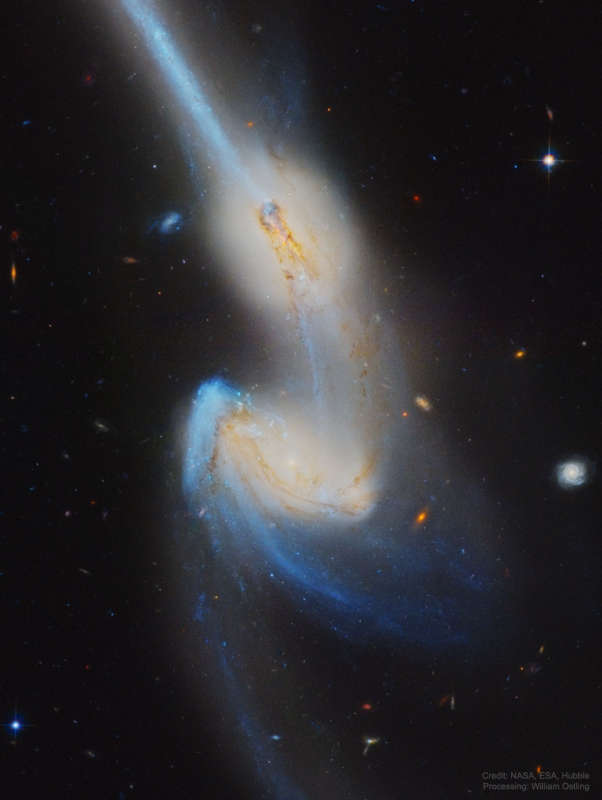Credit & Copyright: NASA,
ESA, Hubble;
Processing & Copyright:
William Ostling
(The Astronomy Enthusiast)
Explanation:
These two mighty galaxies are pulling each other apart.
Known as the "Mice"
because they have such long tails, each
spiral galaxy
has likely already passed through the other.
The long
tails are created by the relative
difference between gravitational pulls
on the near and far parts of each
galaxy.
Because the distances are so large, the
cosmic
interaction takes place in slow motion --
over hundreds of millions of years.
NGC 4676 lies about 300 million
light-years away toward the constellation of Bernice's Hair
(Coma Berenices) and are
likely members
of the Coma Cluster of Galaxies.
The featured picture was taken with the
Hubble Space Telescope's Advanced Camera for Surveys in 2002.
These galactic mice will probably
collide again and again
over the next billion years so that,
instead of continuing to pull each other apart, they
coalesce
to
form a single galaxy.
Follow APOD in English on:
Facebook,
Instagram, or
Twitter
1999 2000 2001 2002 2003 2004 2005 2006 2007 2008 2009 2010 2011 2012 2013 2014 2015 2016 2017 2018 2019 2020 2021 2022 2023 2024 2025 |
Yanvar' Fevral' Mart Aprel' Mai Iyun' Iyul' Avgust Sentyabr' Oktyabr' Noyabr' Dekabr' |
NASA Web Site Statements, Warnings, and Disclaimers
NASA Official: Jay Norris. Specific rights apply.
A service of: LHEA at NASA / GSFC
& Michigan Tech. U.
|
Publikacii s klyuchevymi slovami:
colliding galaxies - stalkivayushiesya galaktiki - NGC 4676
Publikacii so slovami: colliding galaxies - stalkivayushiesya galaktiki - NGC 4676 | |
Sm. takzhe:
Vse publikacii na tu zhe temu >> | |
